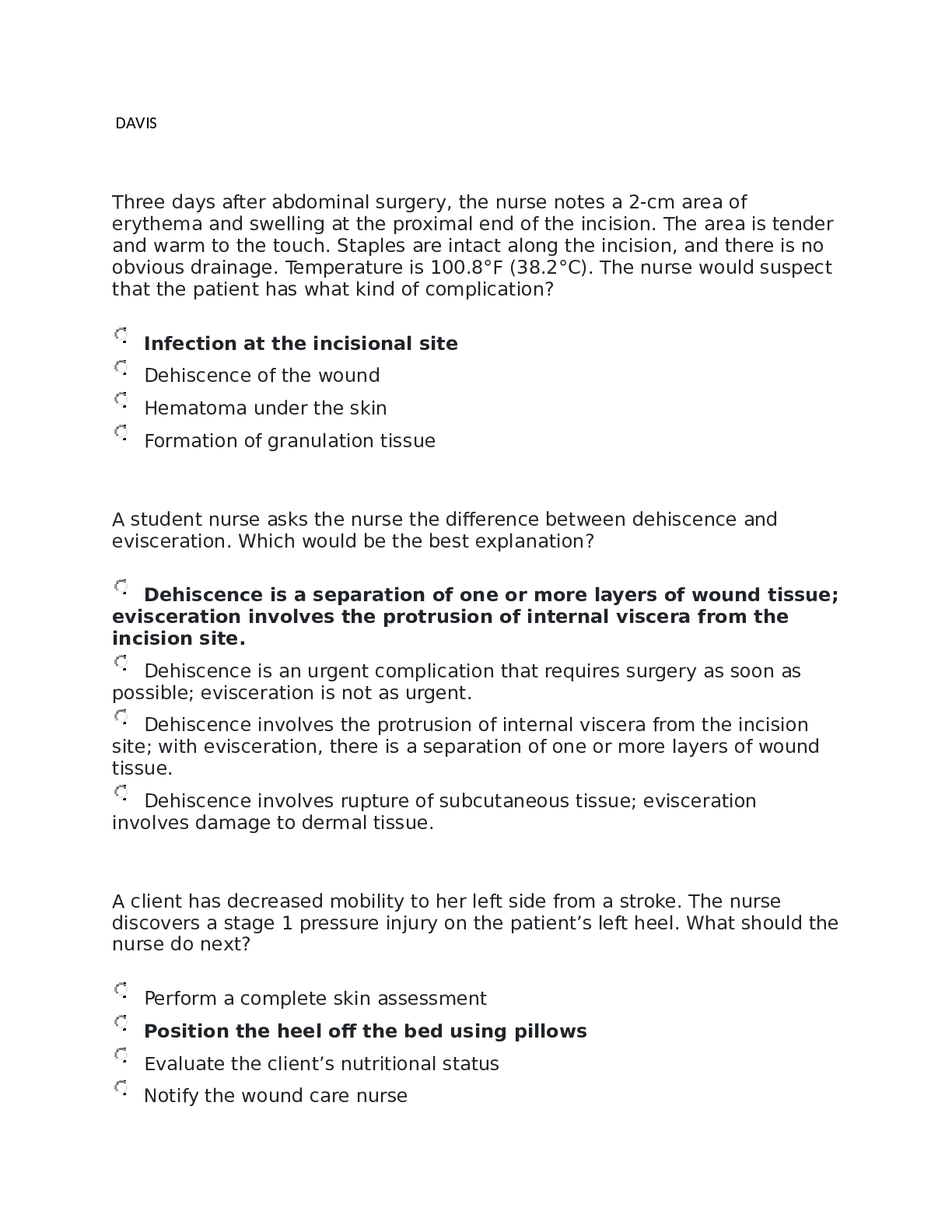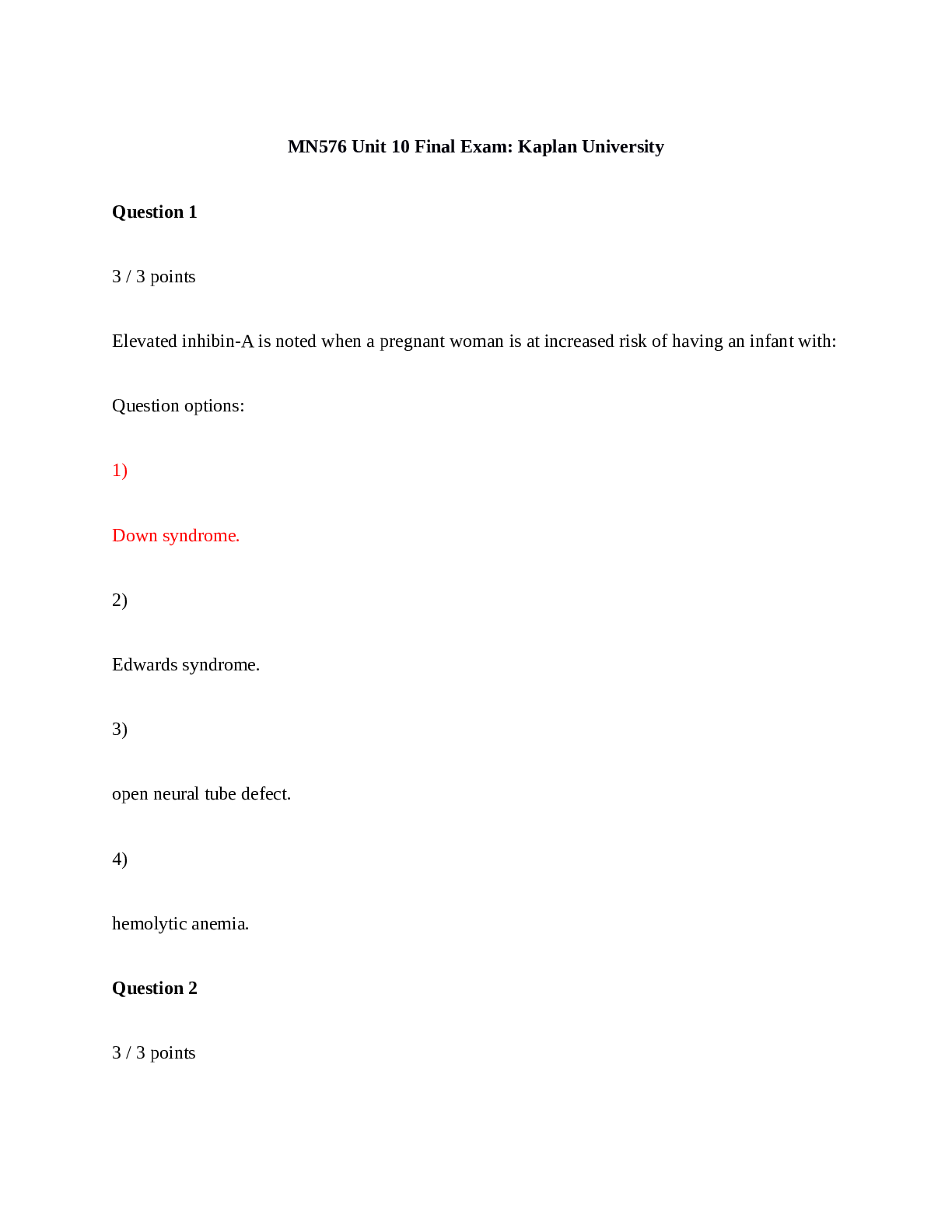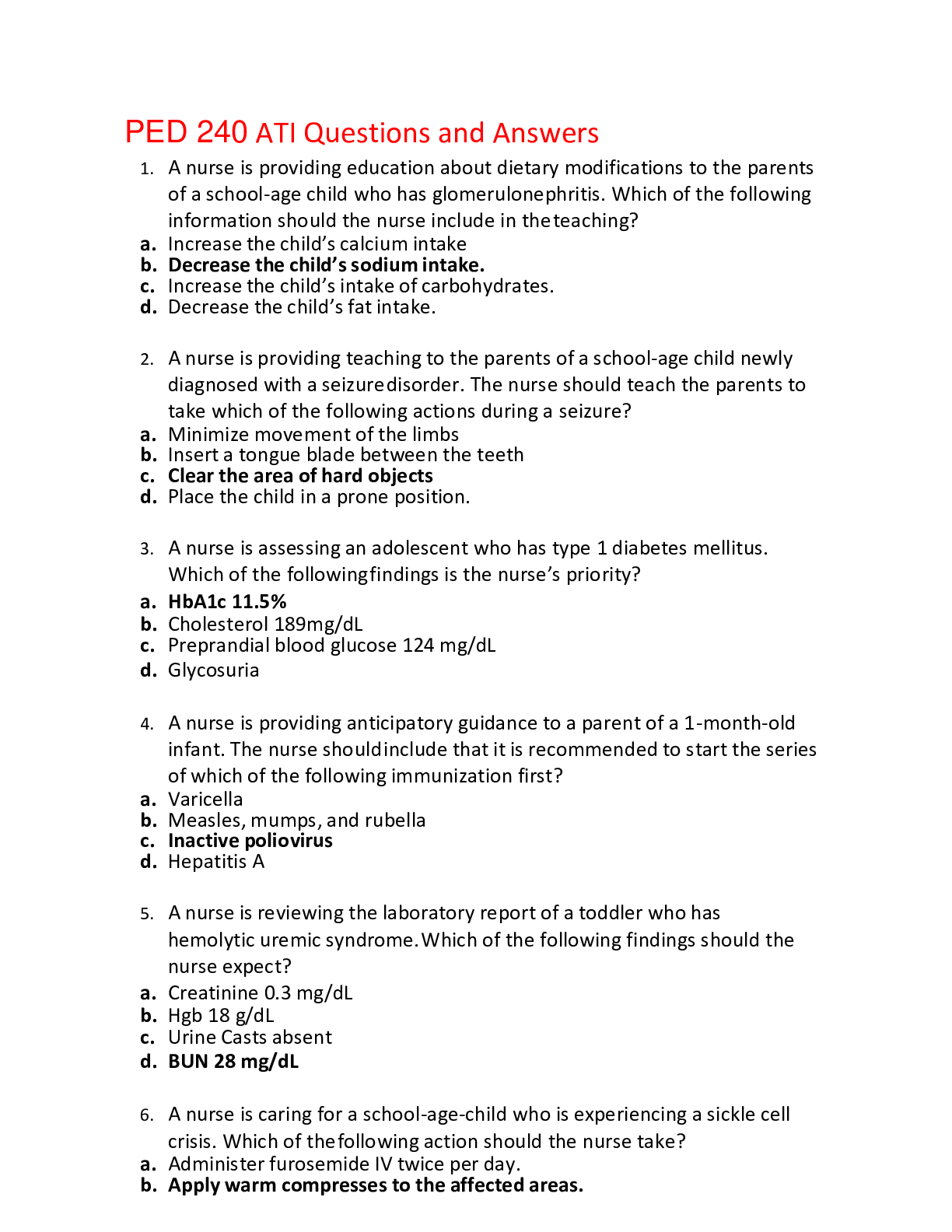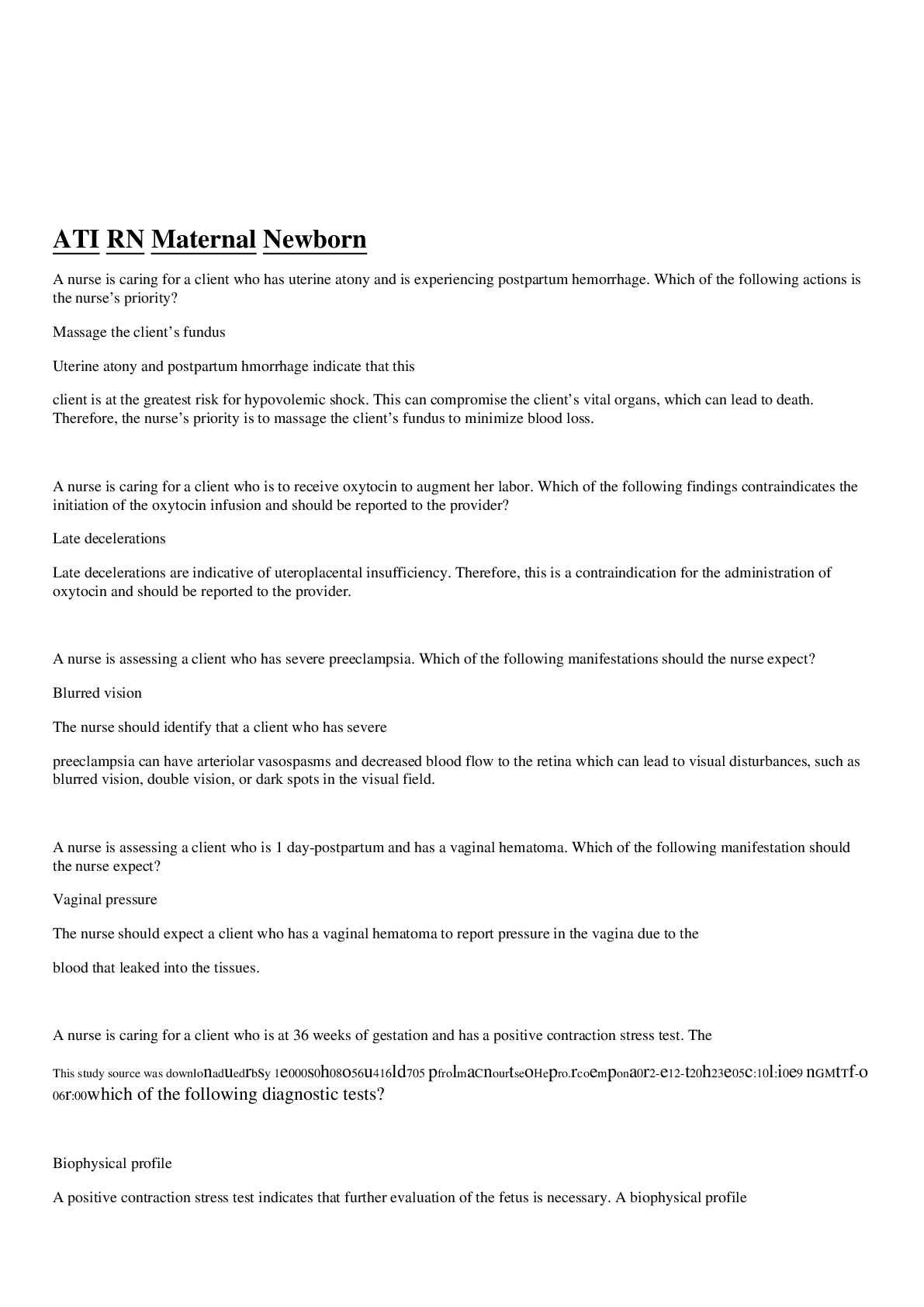ATI Maternity Proctored Exam (Verified Answers Download to Score A)
Document Content and Description Below
1) A nurse in a woman's health clinic is providing teaching about nutritional intake to a client who is at 8 weeks of gestation. The nurse should instruct the client to increase her daily intake of wh... ich of the following nutrients? Calcium The recommendation for calcium intake during pregnancy is the same as that for women who are not pregnant: 1,300 mg/day for women younger than 19 years old and 1,000 mg/day for women between the ages of 19 and 50 years old. Vitamin E The recommendation for vitamin E intake during pregnancy is 15 mg/day, the same as that for women who are not pregnant. Iron The recommendation for iron intake during pregnancy is higher than that for women who are not pregnant. For women who are pregnant, it is 27 mg/day. For women who are not pregnant, it is 15 mg/day for women younger than 19 years old and 18 mg/day for women between the ages of 19 and 50 years old. Vitamin D The recommendation for vitamin D intake during pregnancy is 600 IU/day, the same as 2) A nurse is caring for a client who has uterine hypotonicity and is experiencing postpartum hemorrhage. Which of the following actions is the nurse's priority? Check the client's capillary refill. It is important for the nurse to monitor capillary refill in order to track baseline data for this client. However, another action is the nurse's priority. Massage the client's fundus. Uterine hypotonicity and postpartum hemorrhage indicate that this client is at the greatest risk for hypovolemic shock. This can compromise the perfusion to the client's vital organs, causing death to occur. Therefore, the nurse's priority is to massage the client's fundus in order to minimize blood loss. Insert an indwelling urinary catheter for the client. It is important for the nurse to insert an indwelling urinary catheter in order to assess the client for hypovolemia. However, another action is the nurse's priority. Prepare the client for a blood transfusion. It is important for the nurse to prepare the client for a blood transfusion in order to replace the amount of blood lost from postpartum hemorrhage. However, another action is the nurse's priority. 3) A nurse is providing discharge teaching to a parent whose newborn has just had a circumcision. Which of the following instructions should the nurse include? Apply slight pressure with a sterile gauze pad for mild bleeding. The nurse should instruct the client to attempt to stop mild bleeding by applying pressure with sterile gauze. If bleeding continues, the client should notify the provider. Inspect the circumcision site every 6 to 8 hr. The client should change the newborn's diaper and examine the circumcision site at least every 4 hr. Use baby wipes containing alcohol to cleanse the penis with each diaper change. Baby wipes containing alcohol can irritate the skin and should be avoided until the circumcision has healed, which usually takes 5 to 6 days. During each diaper change, the penis should be washed gently with warm water and have petroleum jelly applied to the glans. Remove yellow exudate daily using a warm, wet washcloth. The client should not attempt to remove any yellow exudate from the circumcision site because it is part of the healing process, which begins within 24 hr and continues for 2 to 3 days. Disrupting it can cause pain and bleeding. 4) A nurse is teaching about effective breastfeeding to a client who is 3 days postpartum. Which of the following information should the nurse include? "Your milk will replace colostrum in about 10 days." The nurse should inform the client that milk production occurs 3 or 4 days postpartum. The breasts will feel firm and heavy. The client should continue to feed the newborn on demand during this period. "Your breasts should feel firm after breastfeeding." The nurse should inform the client that her breasts should feel softer after feeding. This change indicates that the newborn has emptied the breasts of milk. "Your newborn should urinate at least 10 times per day." The nurse should inform the client that the newborn should void six to eight times per day. The newborn should also have at least three stools per day. It is not uncommon for breastfed newborns to have a stool with each feeding. "Your newborn should appear content after each feeding." The nurse should inform the client that a baby who is sated will appear content after feedings. A baby who continues to show indications of hunger (for example, rooting, sucking on the hands, or crying) might not be effectively emptying the breasts during feedings. 5) A nurse is teaching a client who has pregestational type 1 diabetes mellitus about management during pregnancy. Which of the following statements by the client indicates an understanding of the teaching? "I should have a goal of maintaining my fasting blood glucose between 100 and 120." The nurse should teach the client to maintain her fasting blood glucose level between 60 and 99 mg/dL. "I should engage in moderate exercise for 30 minutes if my blood glucose is 250 or greater." The nurse should teach the client to avoid exercise during periods of hyperglycemia and when positive urine ketones are present. "I will continue taking my insulin if I experience nausea and vomiting." The nurse should teach the client to continue to take her insulin as prescribed during illness to prevent hypoglycemic and hyperglycemic episodes. 6) A nurse is discussing the differences between true labor and false labor with a group of expectant parents. Which of the following characteristics should the nurse include when discussing true labor? Contractions become stronger with walking. The contractions that occur during true labor become stronger and more regular with a change in activity, such as walking. Discomfort can be suppressed with a back massage. The discomfort of false labor can be suppressed by using comfort measures, such as a back or foot massage. With true labor, the client discomfort continues regardless of the use of comfort measures. Contractions become irregular with a change in activity. The contractions that occur during true labor will become stronger and more regular with a change in activity. Discomfort is felt above the umbilicus. The discomfort experienced during the contractions of true labor is felt in the lower back and lower abdomen. Discomfort during false labor is usually felt above the umbilicus. 7) A nurse is teaching a group of parents about newborn safety. Which of the following statements by a parent indicates an understanding of the teaching? "I will put a bib on my baby at night to keep her clothing dry." The parents should avoid placing a bib around their newborns' necks at night to prevent choking and suffocation. "I will cover the crib mattress with plastic to prevent staining." The parents should avoid placing plastic over the crib mattress to prevent suffocation. "I will warm my baby's formula using the lowest setting in the microwave." The parents should avoid heating the formula in a microwave to prevent uneven warming of the formula. "I will dress my baby in flame-retardant clothing." The parents should dress their newborns in flame-retardant clothing to prevent injury. 8) A nurse is assessing a client who is postpartum and has idiopathic thrombocytopenia purpura (ITP). Which of the following findings should the nurse expect? Decreased platelet count A client who has ITP has an autoimmune response that results in a decreased platelet count. Increased erythrocyte sedimentation rate (ESR) An increased ESR is an indication of chronic renal failure. Decreased megakaryocytes A client who has ITP will have megakaryocytes within the expected reference range. Increased WBC An increased WBC is an indication of infection 9) A nurse is caring for a newborn who was transferred to the nursery 30 min after delivery. Which of the following actions should the nurse take first? Confirm the newborn's Apgar score. The Apgar score is a physiologic assessment that occurs 1 min following birth and again at 5 min. The nurse should confirm the score when the newborn arrives in the nursery. However, there is another action the nurse should take first. Verify the newborn's identification. When using the safety/risk reduction approach to client care, the first action the nurse should take is to verify the newborn's identity upon arrival to the nursery. Administer vitamin K to the newborn. The nurse should administer IM vitamin K to the newborn soon after birth to increase clotting factors and prevent bleeding. However, the injection can be delayed until after initial bonding time and the first breastfeeding if necessary. Therefore, there is another action the nurse should take first. Determine obstetrical risk factors. The nurse should identify obstetrical risk factors to determine if interventions are required for the newborn. However, there is another action the nurse should take first. 10) A nurse is assessing a client who is in active labor and notes early decelerations in the FHR on the monitor tracing. The client is at 39 weeks of gestation and is receiving a continuous IV infusion of oxytocin. Which of the following actions should the nurse take? Discontinue the oxytocin infusion. Early decelerations in the FHR are considered benign. Early decelerations occur due to compression of the fetal head during contractions, vaginal examinations, and pushing during the second stage of labor. No interventions are necessary for early decelerations. Continue monitoring the client. Early decelerations in the FHR are considered benign. Early decelerations occur due to compression of the fetal head during contractions, vaginal examinations, and pushing during the second stage of labor. No interventions are necessary for early decelerations. Therefore, the nurse should continue to monitor the client. Request that the provider assess the client. Early decelerations in the FHR are considered benign. Early decelerations occur due to compression of the fetal head during contractions, vaginal examinations, and pushing during the second stage of labor. No interventions are necessary for early decelerations. Increase the infusion rate of the maintenance IV fluid. Early decelerations in the FHR are considered benign. Early decelerations occur due to compression of the fetal head during contractions, vaginal examinations, and pushing during the second stage of labor. No interventions are necessary for early decelerations. 11) A nurse in a provider's office is reviewing the medical record of a client who is in her first trimester of pregnancy. Which of the following findings should the nurse identify as a risk factor for the development of preeclampsia? Singleton pregnancy Multifetal gestation, rather than a single fetus pregnancy, increases a client's risk for the development of preeclampsia. BMI of 20 Having a BMI greater than 30 increases a client's risk for the development of preeclampsia. Maternal age 32 years A maternal age of younger than 19 or older than 40 increases the client's risk for the development of preeclampsia. Pregestational diabetes mellitus Pregestational diabetes mellitus increases a client's risk for the development of preeclampsia. Other risk factors include preexisting hypertension, renal disease, systemic lupus erythematosus, and rheumatoid arthritis. 12) A nurse is assessing a client who received carboprost for postpartum hemorrhage. Which of the following findings is an adverse effect of this medication? Hypertension The nurse should recognize that carboprost is a vasoconstrictor that can cause hypertension. Hypothermia Fever is a common adverse effect of carboprost. Constipation Diarrhea is a common adverse effect of carboprost. Muscle weakness Muscle weakness is not an adverse effect of carboprost. 13) A nurse is caring for a newborn who is undergoing phototherapy to treat hyperbilirubinemia. Which of the following actions should the nurse take? [Show More]
Last updated: 1 month ago
Preview 1 out of 26 pages

Reviews( 0 )
Document information
Connected school, study & course
About the document
Uploaded On
Mar 03, 2021
Number of pages
26
Written in
Additional information
This document has been written for:
Uploaded
Mar 03, 2021
Downloads
1
Views
60


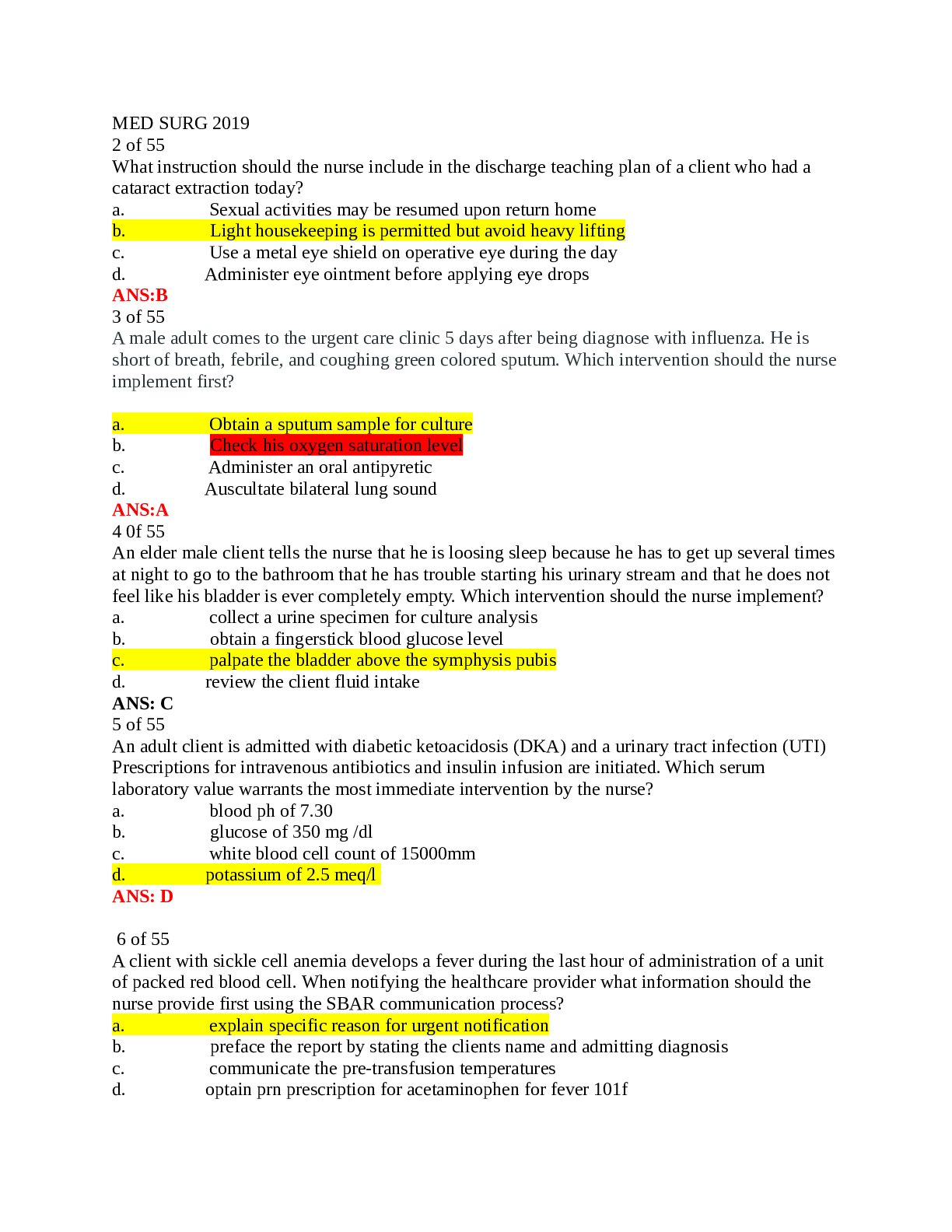

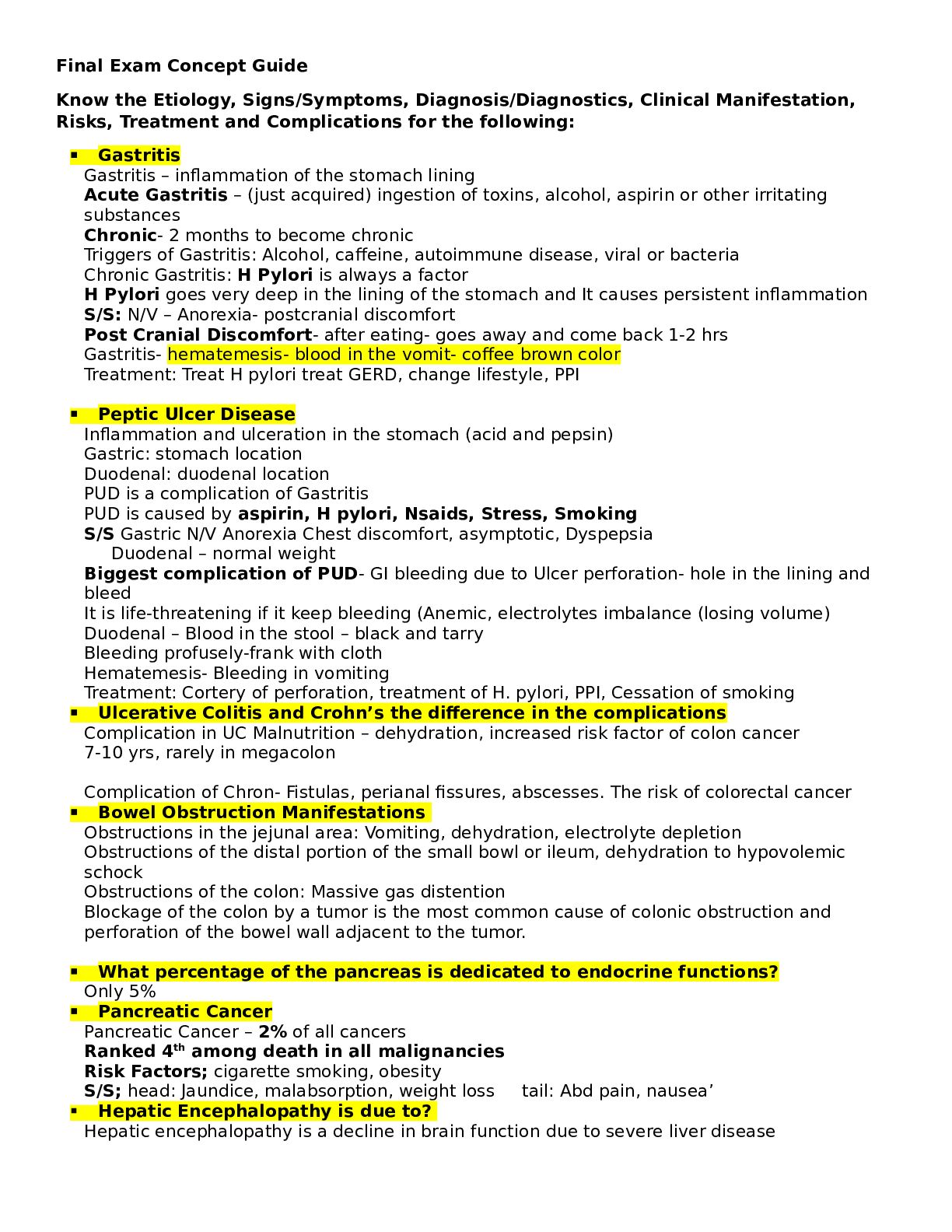
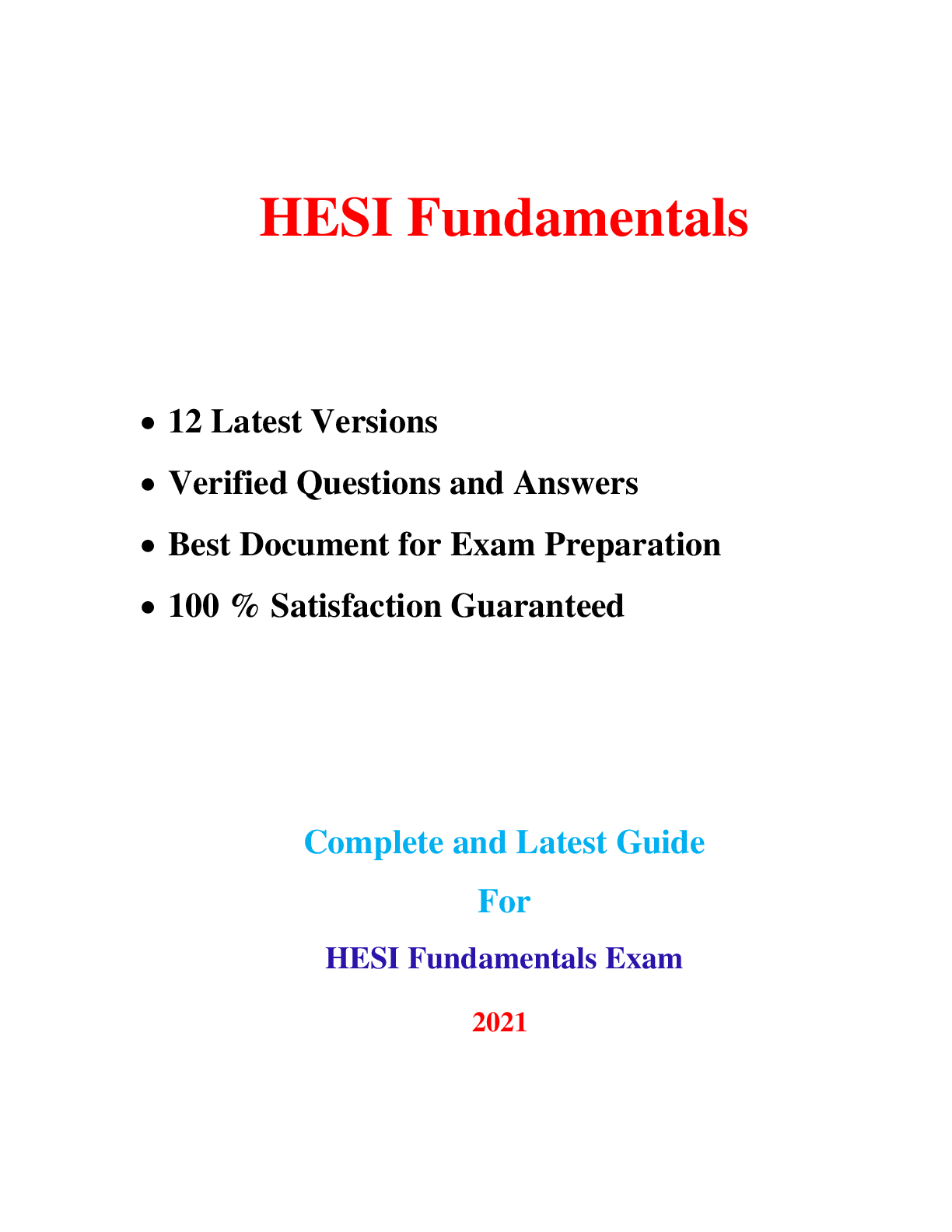




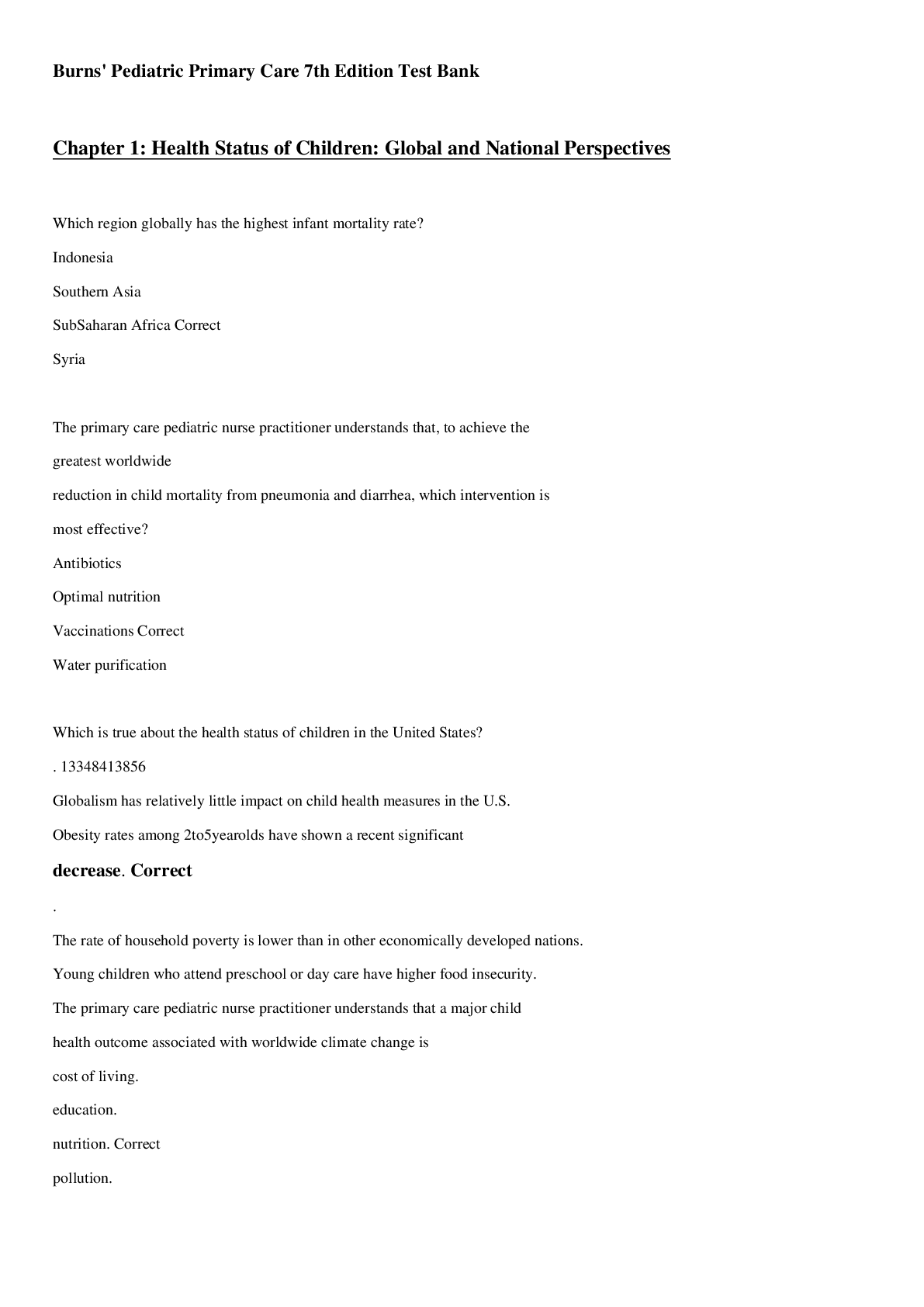



.png)

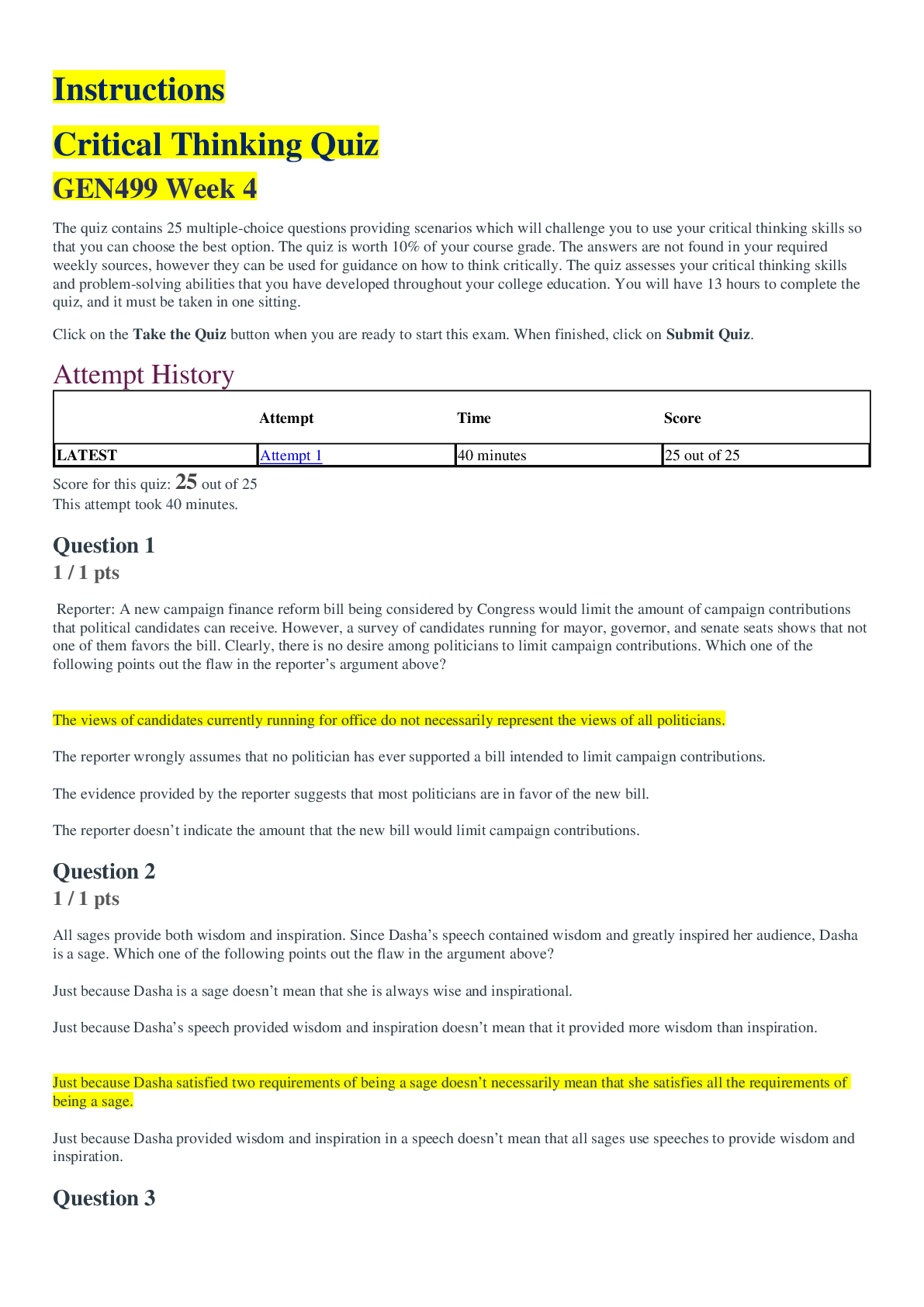


.png)
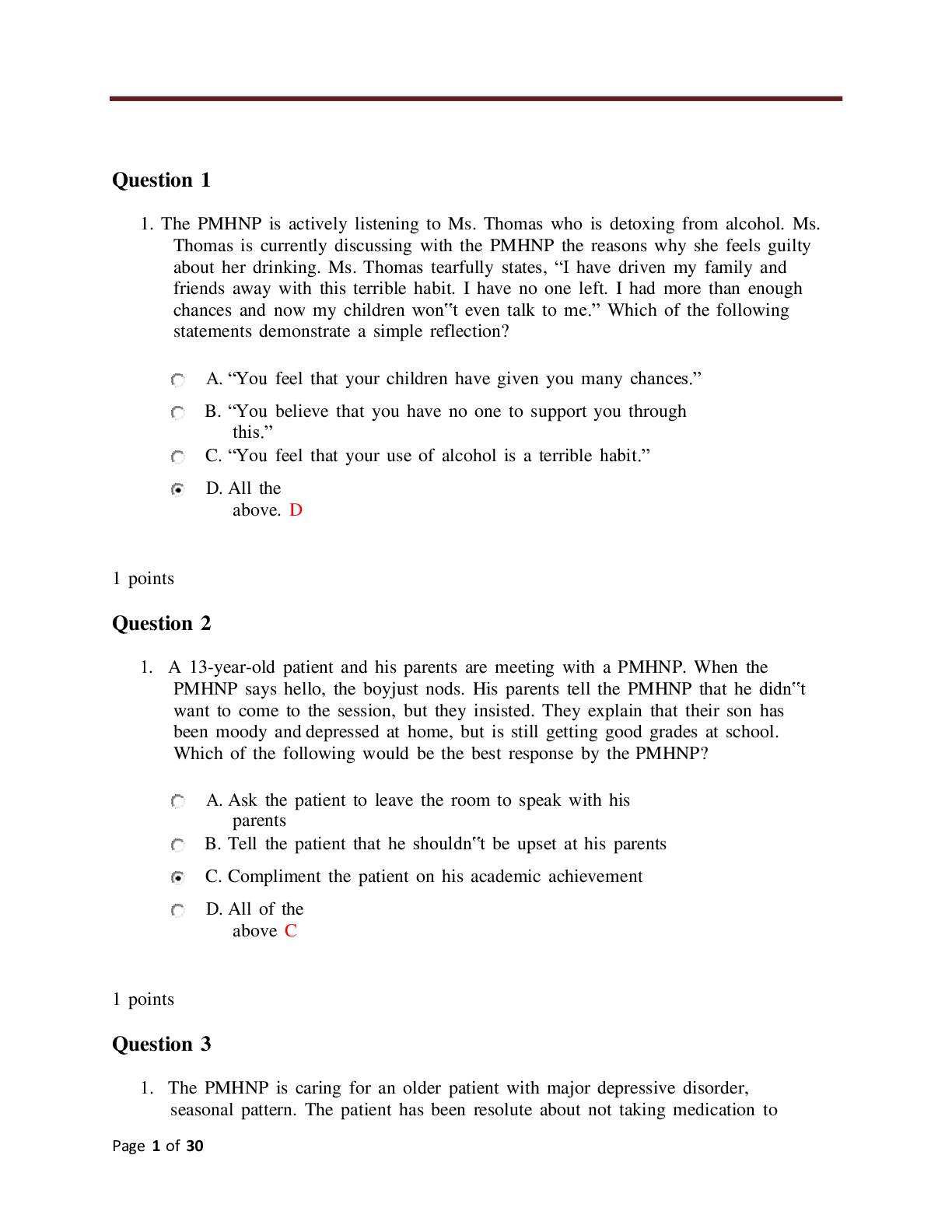

.png)
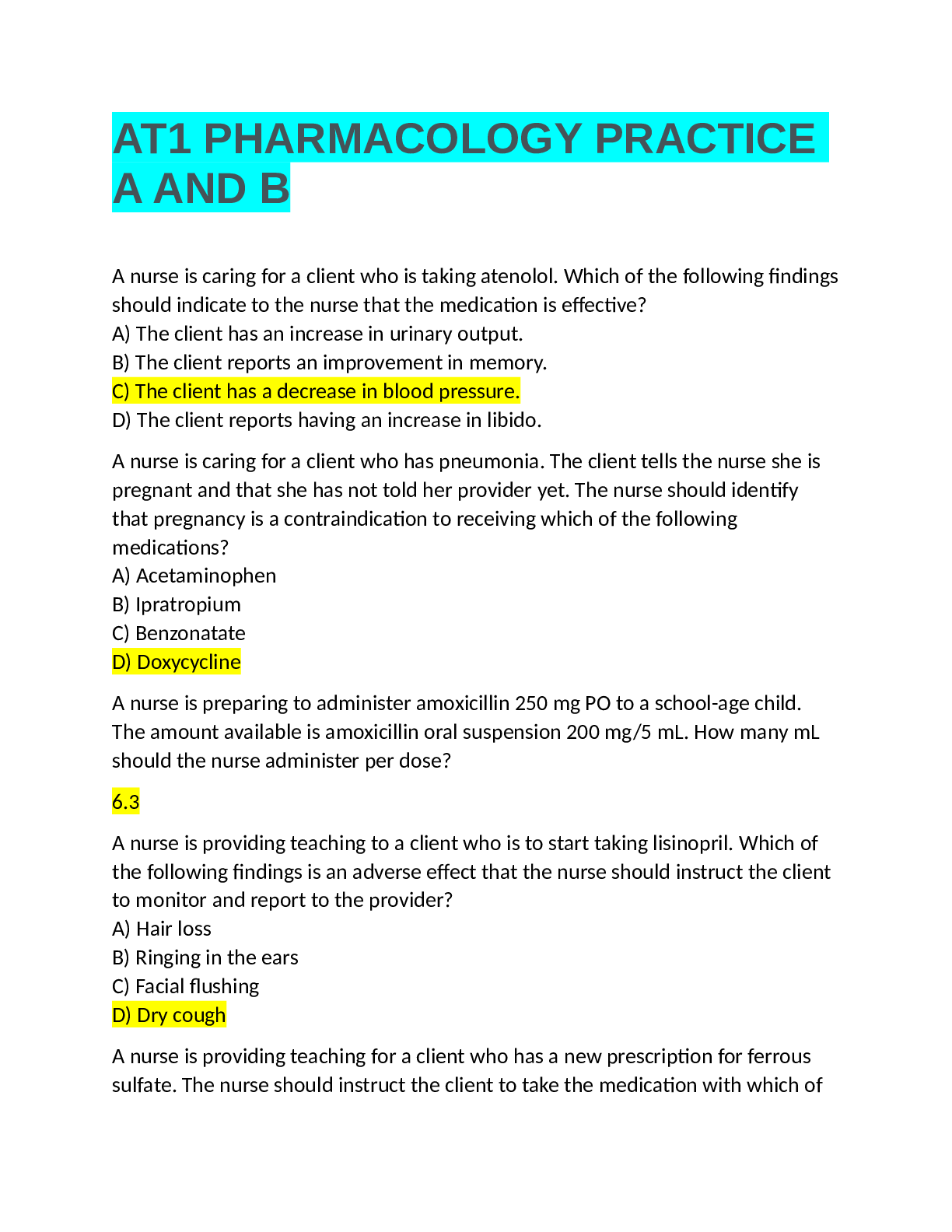
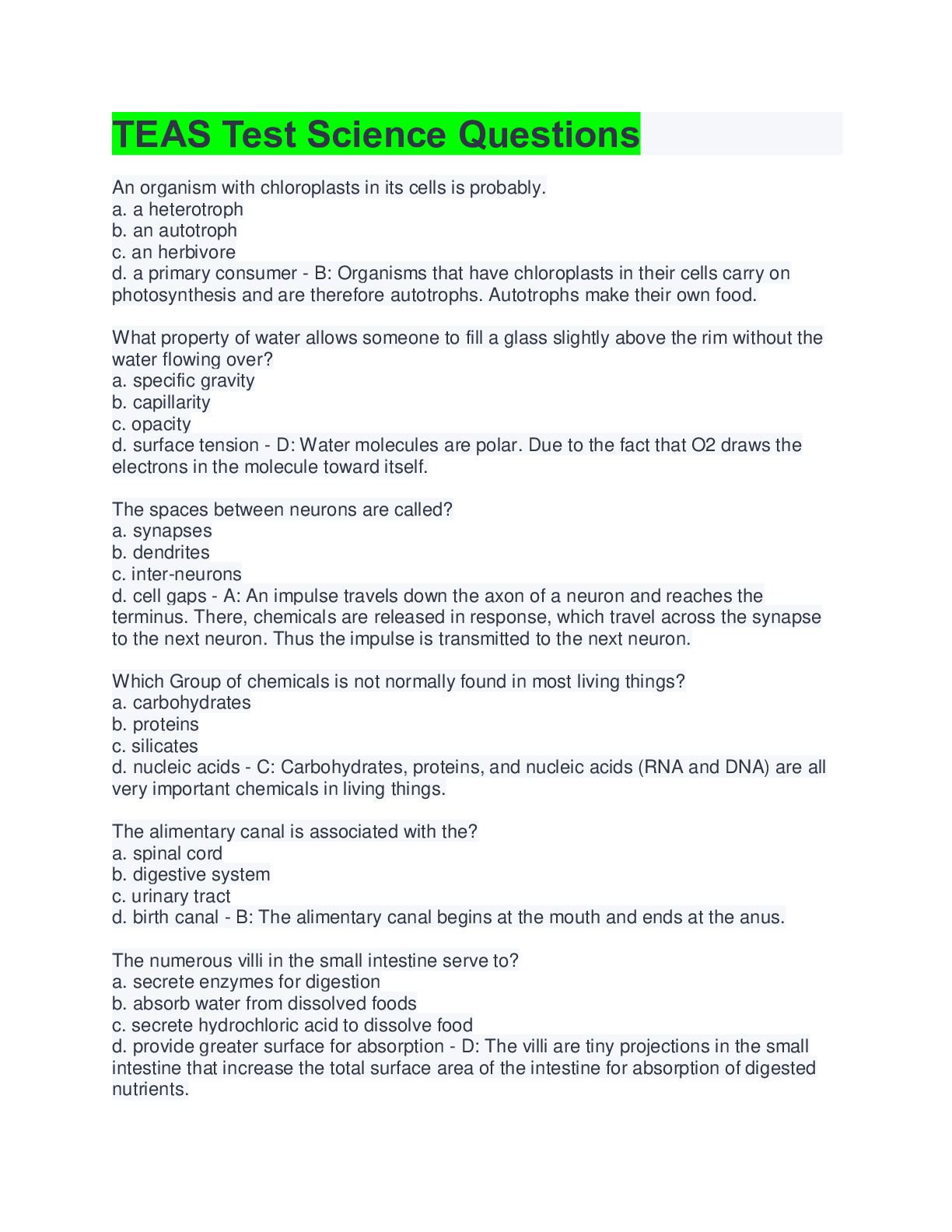
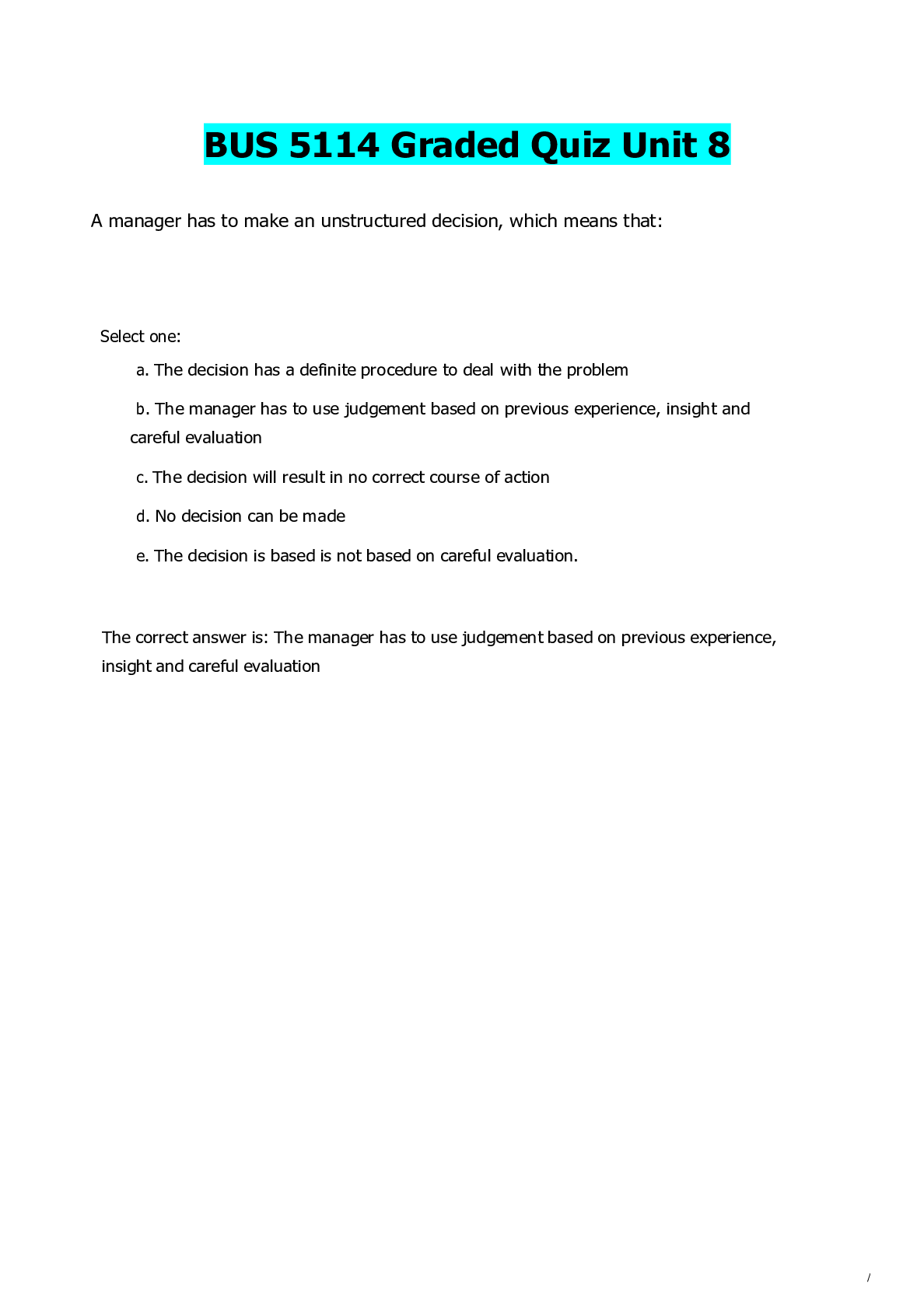
.png)
